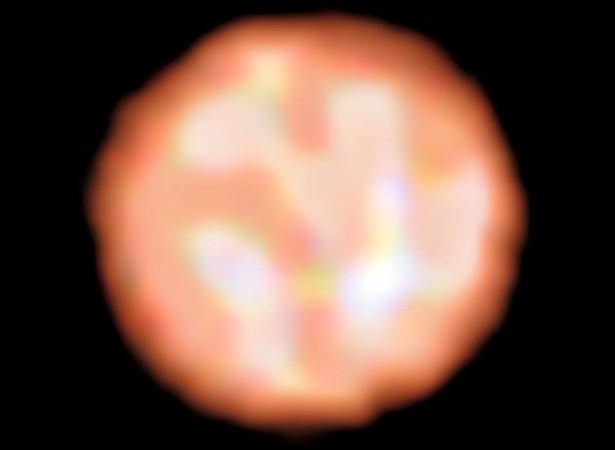
The constellation of Grus (The Crane), which is located 530 light-years from Earth, is home to a red giant star in its death throes. The star, dubbed pi1 Gruis, has garnered much attention from astronomers as it is said to have shown our own Sun's fate in billions of years down the line.
Using ESO's Very Large Telescope, astronomers have for the first time directly observed granulation patterns on the surface of pi1 Gruis, which is covered in convective cells. The cool red giant star, having about the same mass as the Sun, is 350 times larger and several thousand times brighter than the star of our own Solar System.
In a new study, published in the journal Nature, astronomers have predicted that our Sun will also swell to become a similar red giant star in about five billion years.
According to astronomers, each of convective cells making up the surface of pi1 Gruis covers more than a quarter of the star's diameter and measures about 120 million kilometres across. The latest findings also reveal that just one of these cells, or granules, would extend from the Sun to beyond Venus.
When it comes to the Sun, its photosphere contains about two million convective cells, with typical diameters of only 1,500 kilometres, the researchers said.
Astronomers led by ESO's Claudia Paladini used the PIONIER instrument on the Very Large Telescope to observe pi1 Gruis in unprecedented detail. They found that while the surfaces of many giant stars are obscured by dust, the same is present far from pi1 Gruis, leaving minimal effect on the new observations.
Astronomers revealed that pi1 Gruis ran out of hydrogen to burn long time ago. It first started to shrink as it was running out of energy, causing it to heat up to over 100 million degrees.
Because of these extreme temperatures, pi1 Gruis began to fuse helium into heavier atoms such as carbon and oxygen. The star's intensely hot core later expelled its outer layers, causing it to swell to hundreds of times larger than its original size.
"Previous studies of pi1 Gruis found a shell of material 0.9 light-years away from the central star, thought to have been ejected around 20 000 years ago. This relatively short period in a star's life lasts just a few tens of thousands of years - compared to the overall lifetime of several billion - and these observations reveal a new method for probing this fleeting red giant phase," researchers said in a statement.












!['Had denied Housefull franchise as they wanted me to wear a bikini': Tia Bajpai on turning down bold scripts [Exclusive]](https://data1.ibtimes.co.in/en/full/806605/had-denied-housefull-franchise-they-wanted-me-wear-bikini-tia-bajpai-turning-down-bold.png?w=220&h=138)
![Nayanthara and Dhanush ignore each other as they attend wedding amid feud over Nayanthara's Netflix documentary row [Watch]](https://data1.ibtimes.co.in/en/full/806599/nayanthara-dhanush-ignore-each-other-they-attend-wedding-amid-feud-over-nayantharas-netflix.jpg?w=220&h=138)



